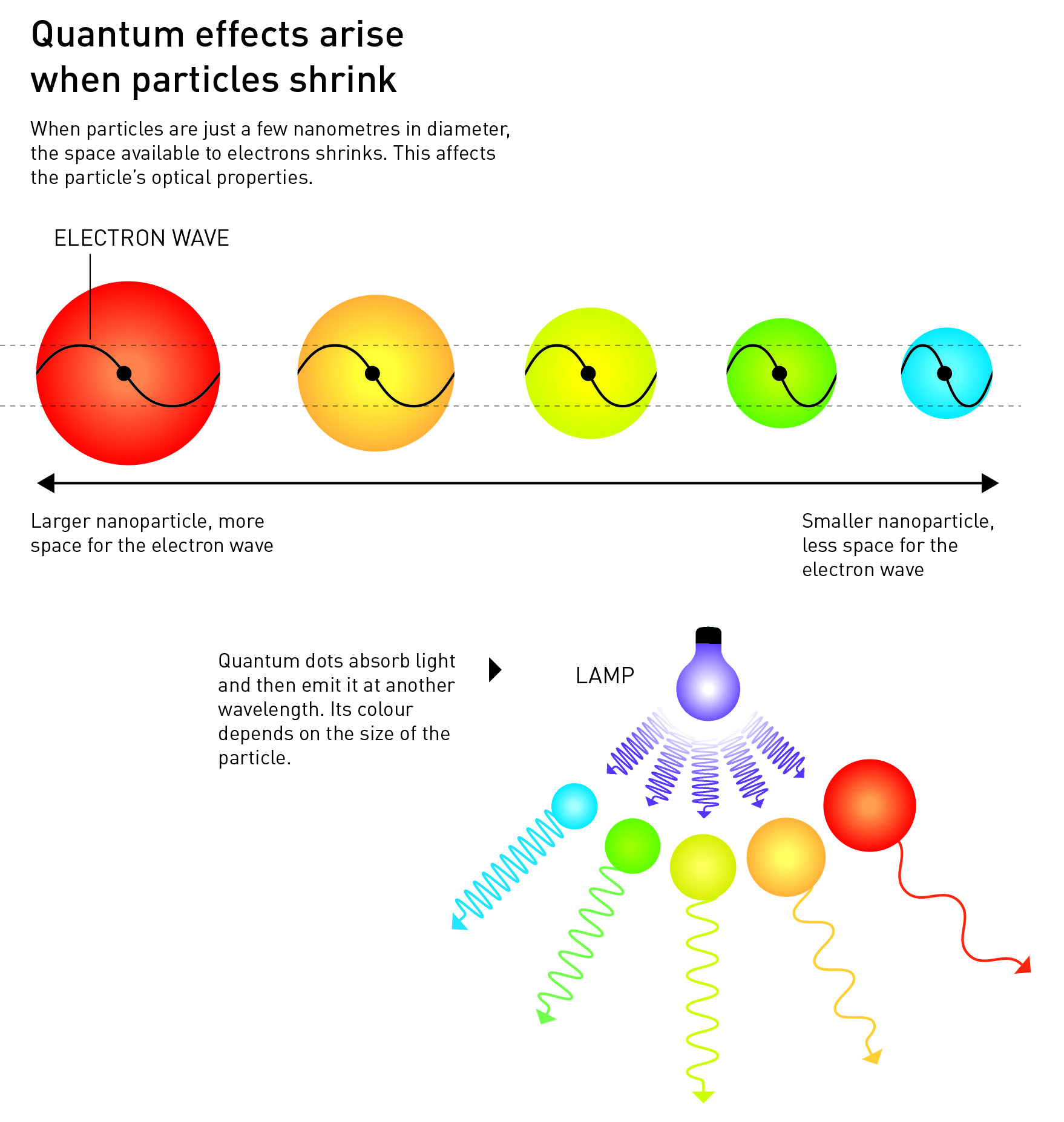Quantum Effects: The Fascinating World of Nanoscale Phenomena
Introduction to Quantum Effects
Quantum effects are the surprising and often counterintuitive phenomena that occur at the nanoscale, where the laws of classical physics break down and the principles of quantum mechanics dominate. These effects are not just theoretical curiosities; they form the basis for many everyday technologies, such as the transistors in our electronic devices. The peculiar behavior of matter at the nanoscale leads to fascinating properties and applications that are not observed in the macroscopic world.

Key Concepts in Quantum Effects
To understand quantum effects, it is essential to grasp the following key concepts:
- Wave-Particle Duality: In quantum mechanics, particles exhibit both wave-like and particle-like properties. This duality is a fundamental aspect of quantum theory and leads to phenomena such as interference and diffraction of particles. For example, light, usually thought of as a wave, can sometimes behave like a stream of particles (photons).
- Quantum Confinement: When the size of a material is reduced to the nanoscale, the motion of electrons and holes is restricted in one or more dimensions. This confinement leads to the quantization of energy levels and the emergence of discrete electronic states, resulting in unique optical and electronic properties. Quantum dots, for instance, exhibit size-dependent emission colors due to quantum confinement.
- Quantum Tunneling: Quantum tunneling is a phenomenon where a particle can pass through a potential barrier that it classically could not surmount. This effect is a consequence of the wave nature of particles and has significant implications for nanoelectronics and scanning probe microscopy. In scanning tunneling microscopes, quantum tunneling allows for the imaging of surfaces with atomic resolution.
- Quantum Entanglement: Entanglement is a quantum phenomenon where two or more particles become correlated in such a way that the quantum state of each particle cannot be described independently, even when the particles are separated by large distances. This effect has potential applications in quantum computing and secure communication, enabling faster computations and unbreakable encryption.
Manifestation of Quantum Effects in Nanomaterials and Devices
Quantum effects manifest themselves in various ways in nanomaterials and devices, leading to unique properties and behaviors:
Semiconductors and Transistors
Semiconductors, the foundation of modern electronics, rely on quantum effects for their operation. In transistors, the quantum tunneling of electrons through thin insulating layers enables the control of electrical current, forming the basis for logic gates and memory cells. The miniaturization of transistors to the nanoscale has pushed the boundaries of classical physics, making quantum effects increasingly relevant in the design and performance of electronic devices.
Quantum Dots
Quantum dots are nanoscale semiconductor crystals that exhibit quantum confinement effects. Due to their small size, quantum dots have discrete energy levels, resulting in size-dependent optical and electronic properties. The emission color of quantum dots can be precisely tuned by controlling their size, making them attractive for applications in displays, lighting, and bioimaging.
Quantum Wires and Quantum Wells
Quantum wires and quantum wells are nanostructures that confine the motion of electrons in one and two dimensions, respectively. These structures exhibit unique electronic and optical properties, such as enhanced carrier mobility and reduced threshold current in lasers. Quantum wires and wells have found applications in high-speed electronics, optoelectronics, and quantum computing.
Quantum Tunneling Devices
Quantum tunneling effects are exploited in various nanoelectronic devices, such as resonant tunneling diodes and scanning tunneling microscopes. Resonant tunneling diodes utilize the quantum tunneling of electrons through double potential barriers to achieve negative differential resistance, enabling high-speed switching and oscillator applications. Scanning tunneling microscopes rely on the quantum tunneling of electrons between a sharp probe tip and a sample surface to achieve atomic-scale imaging and manipulation.
Applications of Quantum Effects
Quantum effects are not just theoretical concepts; they have already found practical applications in various fields and are expected to revolutionize many technologies in the near future:
- Quantum Computing: Quantum effects, such as superposition and entanglement, form the basis of quantum computing. Quantum computers leverage these effects to perform complex calculations and solve problems that are intractable for classical computers, with potential applications in cryptography, drug discovery, and optimization.
- Quantum Cryptography: Quantum cryptography utilizes the principles of quantum mechanics, such as the no-cloning theorem and quantum key distribution, to enable secure communication. By exploiting the fundamental properties of quantum systems, quantum cryptography offers unbreakable encryption and detection of eavesdropping attempts.
- Quantum Sensing: Quantum effects can be harnessed for ultra-sensitive sensing applications. Quantum sensors, such as superconducting quantum interference devices (SQUIDs) and nitrogen-vacancy centers in diamond, can detect extremely weak magnetic fields, electric fields, and temperature changes, with applications in medical imaging, navigation, and fundamental research.
Challenges and Future Perspectives
Despite the immense potential of quantum effects, several challenges need to be addressed for their widespread application. One of the main challenges is the control and manipulation of quantum systems, which are highly sensitive to environmental perturbations. Maintaining quantum coherence and reducing decoherence are crucial for the reliable operation of quantum devices.
Future research in quantum effects will focus on the development of robust quantum systems, the scalability of quantum devices, and the integration of quantum technologies with classical systems. The exploration of new materials and nanostructures that exhibit strong quantum effects will be a key area of investigation. Furthermore, the development of quantum error correction techniques and fault-tolerant quantum architectures will be essential for realizing practical quantum computers and communication networks.
Further Reading
Physical Review Physics Education Research, Seeing quantum effects in experiments
Faraday Discussions, Quantum effects in complex systems: Summarizing remarks
